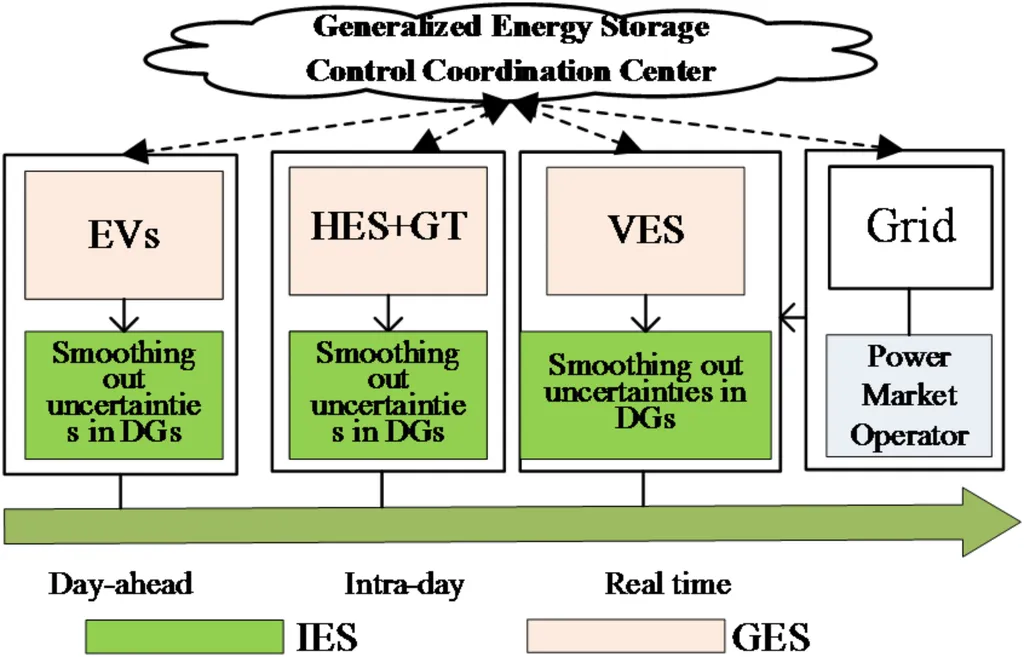In the rapidly evolving energy landscape, the integration of distributed energy resources (DERs) like wind and solar power is transforming the way electricity is generated and distributed. However, this shift brings with it a set of complex challenges, particularly in coordinating the scheduling and secure operation of integrated transmission and distribution (T&D) systems. A recent study published in the journal “IEEE Access” offers a promising solution to these issues, with significant implications for the energy sector.
Led by Ruifeng Zhao from the Electric Power Dispatching and Control Center at Guangdong Power Grid Company Ltd. in Guangzhou, China, the research introduces a multi-timescale scenario-based optimal scheduling approach for integrated T&D power systems. This approach considers the correlation of DERs, addressing the uncertainties and bidirectional power flows that come with increased renewable energy integration.
The study’s innovative method involves several key steps. First, it employs an adaptive multivariate nonparametric kernel density estimation (KDE) method to construct high-dimensional joint probability distributions of DER outputs. This allows for a more accurate capture of the complex correlations between wind power and photovoltaics. “By understanding these correlations, we can better predict the behavior of DERs and optimize their integration into the grid,” Zhao explains.
Next, the research proposes a hybrid scenario generation method that combines improved rejection sampling with a continuous-time Markov chain. This method efficiently produces realistic and representative scenarios across multiple timescales, enabling more effective planning and operation of the grid.
The coordinated scheduling strategy designed by Zhao and his team integrates scenario-based optimization into both day-ahead and intraday operations. This approach balances cost minimization with risk management, enhancing the overall reliability and flexibility of the integrated T&D system.
The practical implications of this research are substantial. As the energy sector continues to shift towards renewable sources, the ability to effectively integrate and manage DERs will be crucial. The method proposed by Zhao and his team offers a robust framework for achieving this, potentially leading to more stable and efficient power systems.
Moreover, the study’s findings could influence future developments in grid management and renewable energy integration. By providing a more accurate and comprehensive approach to scenario-based optimization, this research paves the way for improved coordination between transmission and distribution levels, ultimately enhancing the reliability and resilience of the power grid.
Published in the peer-reviewed journal “IEEE Access,” which translates to “IEEE Open Access,” the study’s findings are a significant contribution to the field of energy systems research. As the energy sector continues to evolve, the insights and methods presented in this research will be invaluable in shaping the future of grid management and renewable energy integration.

